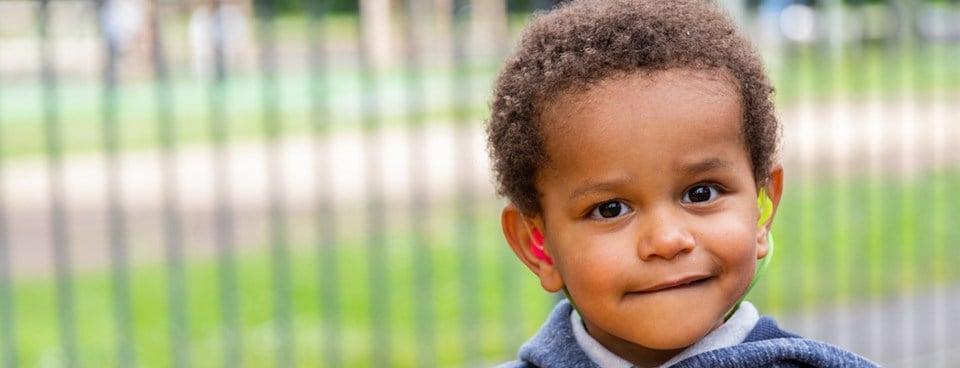Posted: 05/05/2025
Deaf Awareness Week 5 – 11 May 2025
Reading Time: 3 minutes
Deaf Awareness Week is celebrated from 5 – 11 May 2025 and highlights the need for inclusivity for those who are deaf and hard of hearing and removing the stigma surrounding deafness so that deaf people are truly heard, valued and empowered.
The theme for Deaf Awareness Week this year is “Beyond Silence”, focusing on the importance of looking beyond the common misconceptions about deafness and recognising the contributions of Deaf individuals to society.

“Beyond Silence” encourages greater understanding of how Deaf and hard-of-hearing people communicate, from British Sign Language (BSL) to lip-reading, written communication, and assistive technology. It also sheds light on the social, cultural, and professional barriers that many Deaf individuals face, advocating for improved accessibility, inclusivity, and equal opportunities.
This year’s campaign calls on individuals, organisations, and communities to promote BSL learning, improve workplace accessibility, ensuring equal access to education, and fostering more inclusive public spaces, we can build a society where Deaf people are truly heard, valued, and empowered.
We work with a number of families affected by negligently caused deafness; this includes deafness due to meningitis and deafness due to brain injury suffered at birth. We see the impact of deafness upon children and young people and the challenges that it can bring if there is not appropriate support available.
According to the National Deaf Children’s Society, in the UK it is estimated that there are around 50,000 deaf children. 3 babies are born deaf every day and more than 90% of deaf children are born to hearing parents.
In the UK, half of deaf children are born deaf and the other half become deaf during childhood. Every deaf child may have different levels of deafness.
Hearing aids do not fully restore hearing but are vital for deaf children to make the most of the hearing they have. A cochlear implant is a type of implanted hearing device that converts sound into electrical signals. They are suitable for children with a severe to profound hearing loss.
In England, 1 in 5 deaf children have an education, health and care plan and have a special or additional need alongside their deafness. 78% of deaf children in the UK attend mainstream schools where they may be the only deaf child, 6% attend mainstream schools with resource provisions, 3% attend specials schools for deaf children and 12% attend special schools not specifically for deaf children.
Even though deafness is not a learning disability, deaf children across the UK often underachieve in education. In England, deaf children achieve on average a whole grade less in each subject than other children in their GCSE’s. There has been a decline of 15% in the number of qualified teachers of the deaf in England since 2011.
Here are some tips from the National Deaf Children’s Society in respect of deaf friendly communication with children:
- Every deaf child will have a preferred way of communicating so find out if they use speech, British Sign Language or a mixture of both.
- To get a deaf child’s attention you can wave, knock a table or tap their shoulder lightly.
- Speak as you normally would, if you speak slowly or too loudly, it makes lip reading more difficult.
- In a group setting, ask everyone to take their turn talking.
- Make sure you face the person when talking and that your face is well lit.
- Don’t move around and don’t cover your mouth with your hands, chew gum or smoke as this will make lip reading very difficult.
- Reduce any background noise – hearing aids and cochlear implants help to amplify sounds so any background noise can make it difficult to hear.
- Try writing your message down or texting to your phone if you are struggling to communicate.
- Use gestures – point to what you are talking about and use gestures to support your communication.
- Don’t say “I’ll tell you later” – this is a deaf child’s pet hate, they want to be involved so if one method doesn’t work, try another.
- Learn to fingerspell – in British Sign Language, the alphabet is made up of letters formed using both hands. Fingerspelling is used to spell out words like names of places or people. You can download a copy of the fingerspelling poster on the National Deaf Children’s Society website.
Free deaf awareness resources can be obtained from the National Deaf Children Society website www.ndcs.org.uk
If your child’s hearing loss is due to negligent medical treatment, such as a delayed diagnosis, misdiagnosis or errors during surgery etc, please feel free to contact our Clinical Negligence Department on 01482 323697 to discuss in whether a medical negligence claim can be pursued.
FRIENDLY, EFFICIENT LEGAL ADVICE
We’re ready to chat when you are
Drop us an email or give us a call for a no obligation chat to see if we can help.